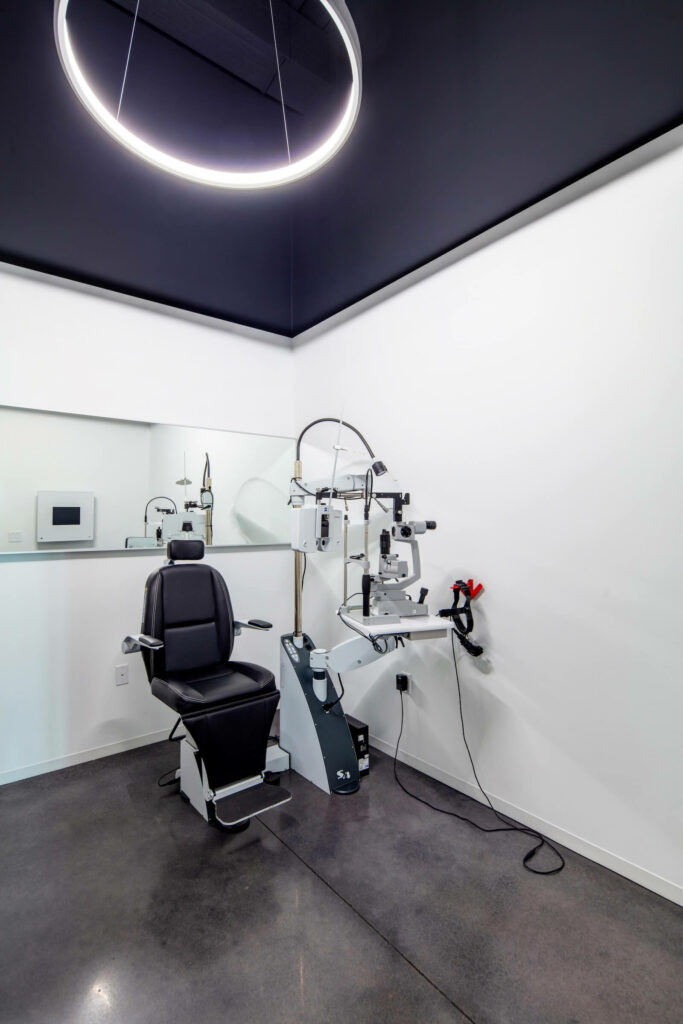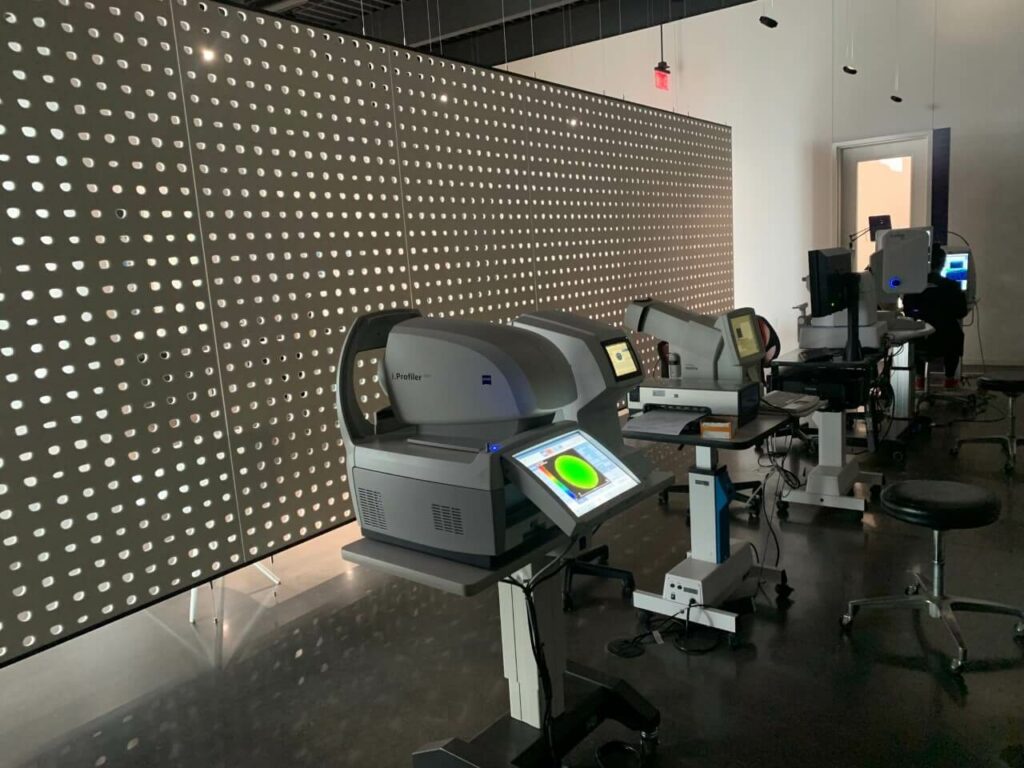In a world where technology is deeply intertwined with our daily lives, healthcare has taken a leap into the digital age. This is particularly evident in optometry, where digital eye exams are revolutionizing how we approach eye health. But what exactly is a digital eye exam, and how does it differ from traditional vision tests?
Digital eye exams use computerized equipment to test visual acuity, eye health, and the need for corrective lenses, which may result in more accurate and efficient results. Traditional eye exams rely on manual tools and subjective reactions from patients.
Understanding Digital Eye Exams
A digital eye exam comprehensively evaluates a person’s visual health using advanced digital technology. Unlike traditional eye exams relying on manual tests and equipment, digital exams utilize computer-based systems to measure vision accuracy and eye health, potentially detecting early signs of eye diseases.
Key Components
Among the most vital components of a digital eye exam are the sophisticated pieces of equipment designed to assess and diagnose vision accurately and efficiently.
The core elements of a digital eye exam typically include automated refraction tests to measure how well your eyes can focus light and digital retinal imaging to capture a detailed photo of the back of your eye. Other computerized tests may measure the curvature of the eye surface and the intraocular pressure, and can even map the entire optical pathway.
Optical Coherence Tomography
One standout technology is the Optical Coherence Tomography (OCT) scanner. This non-invasive imaging test provides high-resolution cross-sectional images of the retina, helping in the early detection of diseases such as glaucoma, macular degeneration, and diabetic eye disease.
Digital Fundus
Another essential tool is the digital fundus camera, which captures detailed images of the retina, optic disk, and blood vessels, allowing for a comprehensive evaluation of the eye’s health.
These digital advancements facilitate a level of precision and detail not attainable with traditional eye exam methods, ensuring that patients receive the most accurate diagnoses and effective treatment plans.
Benefits
Digital eye exams offer several advantages over traditional methods, significantly impacting patient care and satisfaction.
Enhanced Precision
Firstly, they provide enhanced precision in measurements and diagnostics, leading to more accurate prescriptions and better detection of eye conditions at early stages. This precision stems from eliminating human error that can occur with manual testing.
Faster Than Traditional Exams
Secondly, digital exams are typically faster, making the eye exam process more efficient and less time-consuming for patients. This efficiency is especially beneficial for individuals with tight schedules or those who may find longer appointments challenging.
Furthermore, the use of digital imagery allows both our optometrists and the patient to visually explore the eye’s condition together, fostering a better understanding of one’s eye health and enhancing the doctor-patient relationship.
Results For the Long-Run
Lastly, digital records play a crucial role in longitudinal eye health monitoring, offering our optometrists a comprehensive view of their patient’s eye health over time and enabling them to detect subtle changes that could indicate emerging eye conditions.

What to Expect
When you arrive for a digital eye exam, the process may feel slightly different from the traditional eye exams you’re used to. Initially, you might be asked to complete a digital questionnaire on a tablet or computer, providing our optometrists with your visual history and any specific concerns. Following this, a series of digital tests will be conducted.
Diving Deeper into Digital Eye Exam Tests
More advanced digital eye exams can include an automated refraction test to pinpoint your exact prescription, digital retinal imaging to take a clear picture of the back of your eye, and an OCT scanner for a detailed view of your retinal layers. Each of these tests is non-invasive and designed for maximum comfort, often requiring only that you look into a machine or at a screen.
The beauty of these digital tools is not just in their precision but also in their ability to make the eye exam experience more interactive. You may see digital images of your eye on a screen, explaining the findings in real time. This makes the visit more educational and allows for a more transparent discussion about your eye health.
The entire process is swift and seamless, usually concluded in less time than traditional exams but with a depth of insight that significantly surpasses them.
Comfort Is a Priority
When undergoing a digital eye exam, patients can expect a faster and less invasive experience. While dilation might still be necessary for a comprehensive view, many digital systems reduce the need for this process or shorten the required dilation time. The whole process is streamlined, often taking less time than traditional methods, without sacrificing thoroughness.
The Future of Eye Care
The future of eye care is exciting and promising, with digital technology at the forefront of its evolution. As we continue to advance, we can anticipate more innovative tools that will further transform how optometrists diagnose and treat eye conditions.
Moving Toward Accessibility
Furthermore, telemedicine is expected to expand the reach of eye care, making it accessible to remote areas where patients may not have easy access to an optometrist. This could significantly reduce the prevalence of conditions that cause vision impairment and blindness by ensuring timely diagnosis and treatment.
The Future of Telehealth
Digital eye exams will likely become more integrated with telehealth services, allowing for remote assessments and consultations. Machine learning algorithms will enhance diagnostic accuracy, identifying patterns that may not be evident through standard testing.
Taking the Leap Toward Digital Eye Exams
Are you convinced that a digital eye exam might be right for you? If you are interested in experiencing the benefits of this modern approach to eye health, contact CHROMA modern Eyewear Eyecare today.
Remember, taking care of your eyesight is an investment in your overall health and quality of life. Don’t hesitate to adopt the latest advancements in eyecare!



